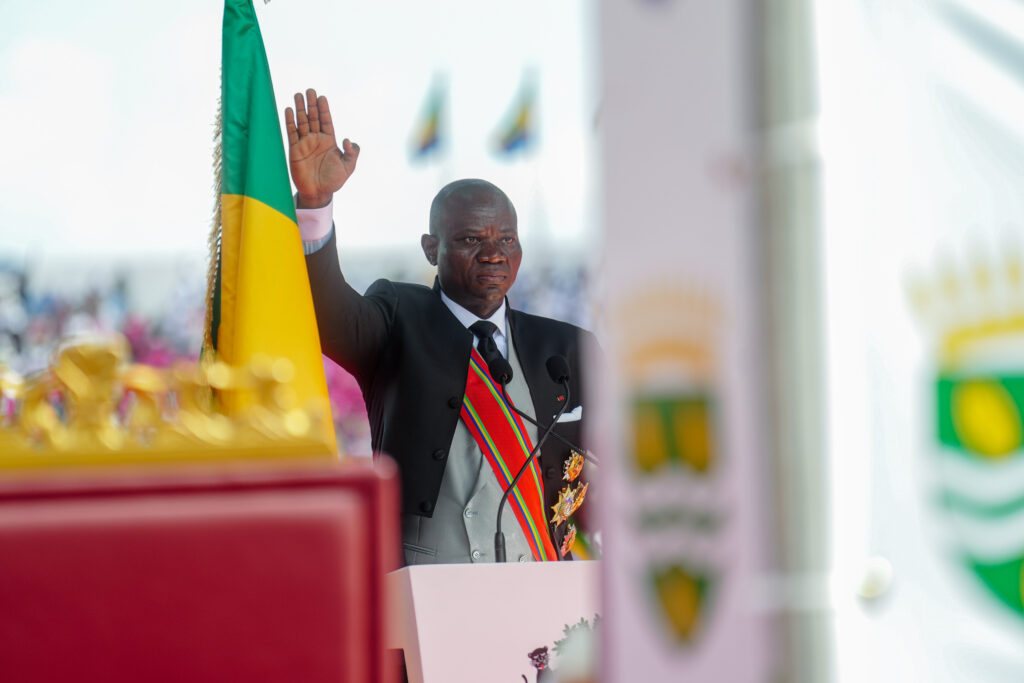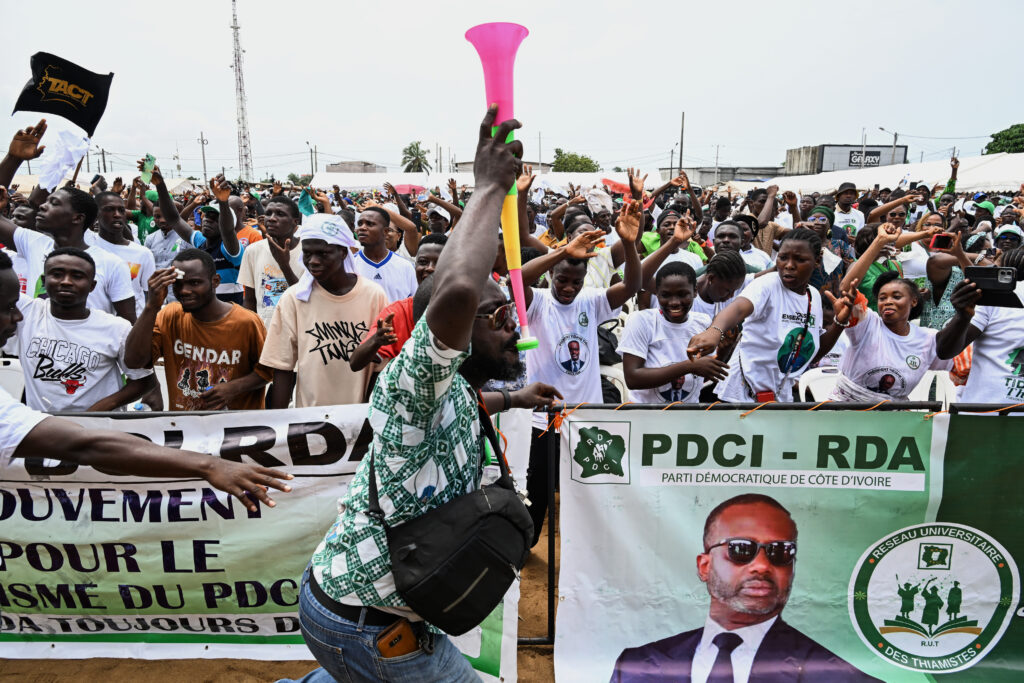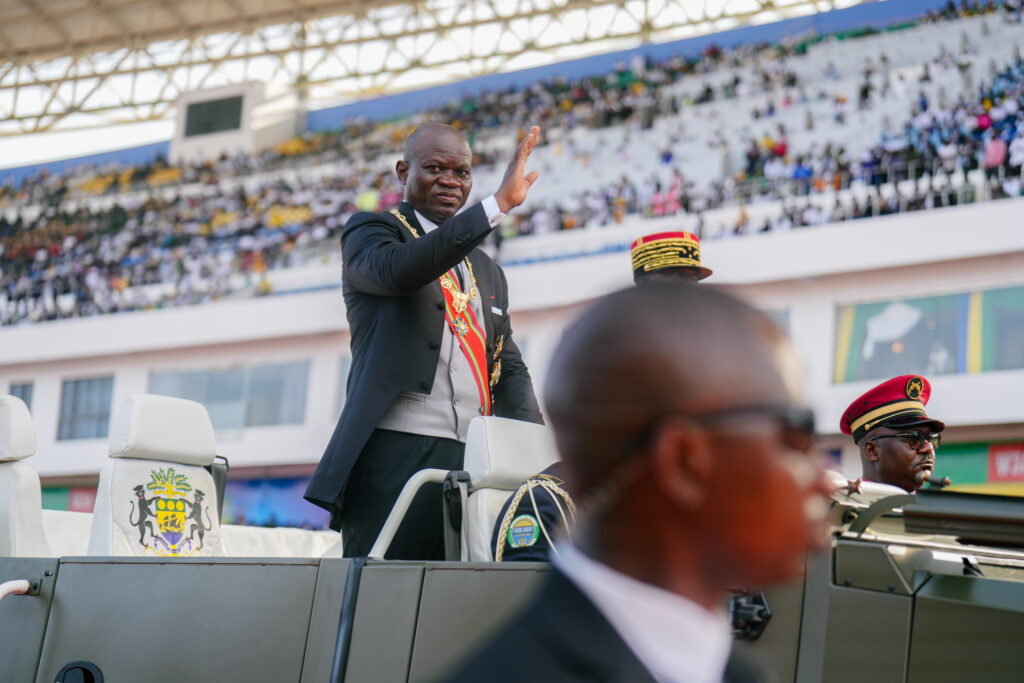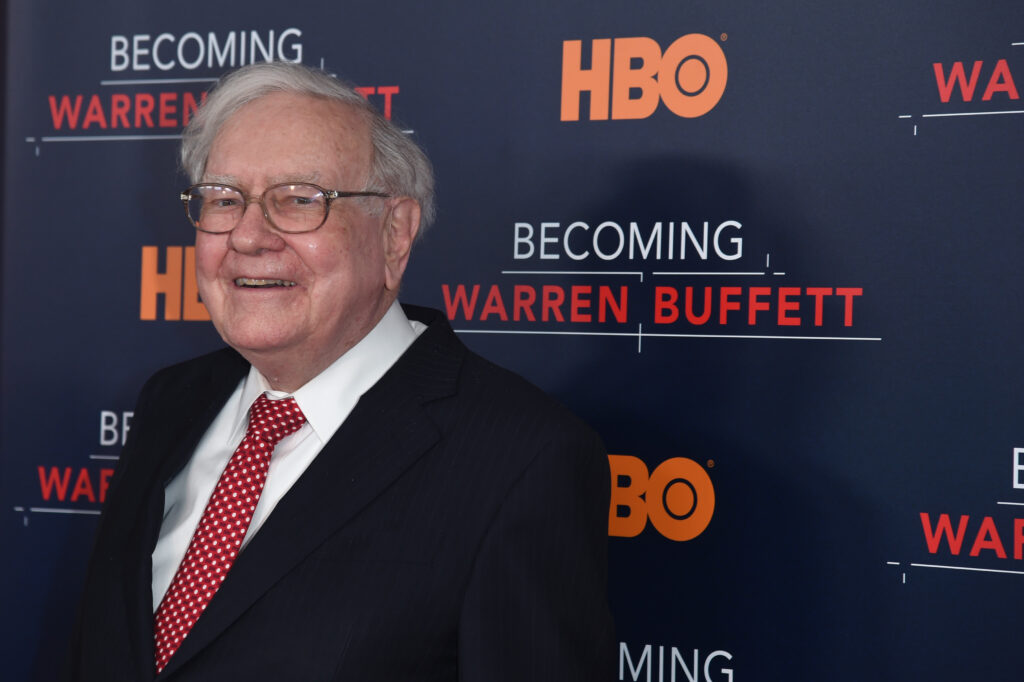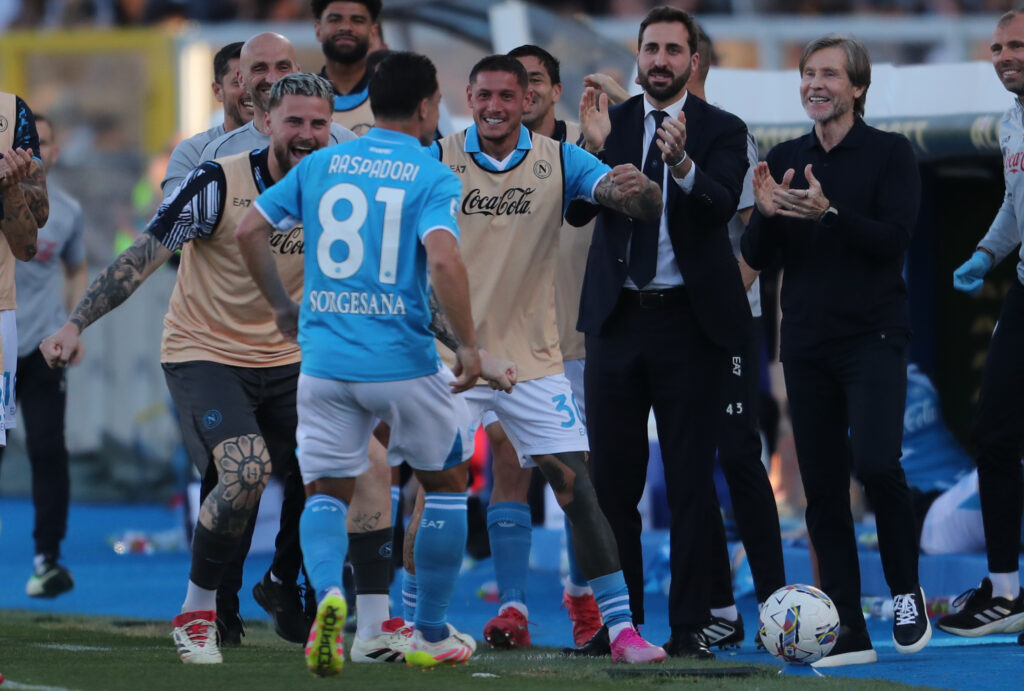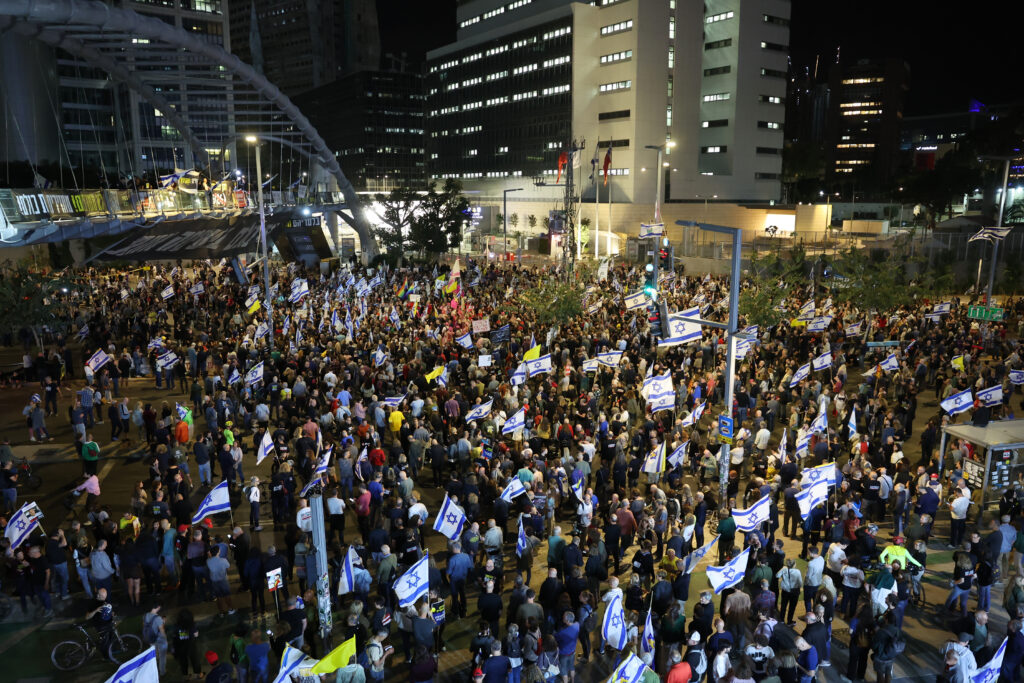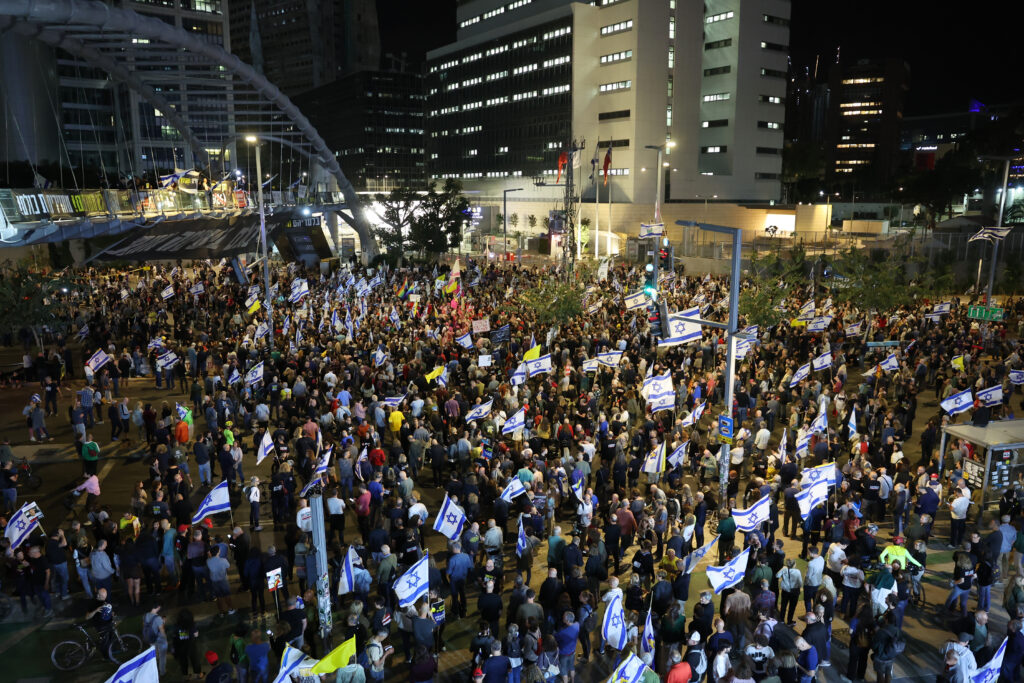Gabon: Oligui Nguema investi après 19 mois de transition
Le président Brice Clotaire Oligui Nguema a été investi samedi dans un stade près de Libreville devant environ 40.000 personnes, mettant fin à son rôle de chef de la transition, après 19 mois de régime d’exception.M. Oligui, général de brigade, tombeur de la dynastie Bongo, a prêté serment sur la nouvelle constitution approuvée par référendum pendant la transition en novembre 2024.”L’élection du Président de la République met fin au processus de transition et marque en conséquence le retour à l’ordre constitutionnel”, a-t-il martelé lors de son discours d’investiture.Le général-président, plébiscité le 12 avril avec 94,85% des voix, avait fait son entrée dans le stade vers 13H30 (12H30 GMT) saluant la foule debout à l’arrière d’une voiture au toit ouvert, en costume civil sombre, écharpe rouge sur le torse. Il prend officiellement les commandes du pays pour un mandat de sept ans.Avant un retour complet à l’ordre constitutionnel, le Gabon devra encore organiser des élections législatives et locales. Le président a annoncé samedi qu’elles se tiendront à l’automne 2025.Dès 07H00 (06H00 GMT), des encombrements étaient visibles dans les rues de Libreville et aux abords du stade à Akanda, au nord de la capitale, ont constaté des journalistes de l’AFP.-“Modèle de transition réussie”-Les spectateurs, arborant t-shirts et drapeaux à l’effigie du président, ont attendu une grande partie de la journée dans une ambiance festive le remplissage progressif des tribunes.Le stade d’Angondjé ou stade de l’amitié sino-gabonaise, au nord de la capitale, a accueilli gratuitement les Gabonais. C’est la première fois au Gabon qu’une cérémonie de prestation de serment présidentielle a lieu devant un public aussi large.Seize chefs d’Etat du continent africain ont assisté à l’événement, dont Umaro Sissoco Embalo (Guinée Bissau), Adama Barrow (Gambie), Bassirou Diomaye Faye (Sénégal), Faustin-Archange Touadéra (Centrafrique) ou encore Teodoro Obiang Nguema Mbasogo (Guinée équatoriale).Le président de la République démocratique du Congo (RDC) Félix Tshisekedi était aussi présent, de même que le chef de l’Etat rwandais Paul Kagame. Kigali et Kinshasa sont actuellement en pourparlers pour tenter de mettre fin au conflit dans l’Est de la RDC. Et le général Mamadi Doumbouya, qui a pris le pouvoir par la force en septembre 2021 en Guinée, est arrivé vêtu d’habits traditionnels africains, comme le président tchadien Mahamat Déby.”Désormais, le Gabon est membre à part entière des Etats démocratiques et sera à tout jamais un modèle type de transition réussie”, a dit M. Touadéra dans une allocution en tant que facilitateur de la Communauté économique des Etats de l’Afrique centrale (CEAC) pour la transition gabonaise.La France était représentée à Libreville par son ministre délégué chargé de l’Europe, Benjamin Haddad.Dès mardi soir, dans un ultime communiqué, les militaires et membres des forces de sécurité du Comité pour la transition et la restauration des institutions (CTRI), l’organe mis en place après la chute d’Ali Bongo, ont annoncé leur dissolution.-“Militaires dans les casernes”-Dans un communiqué vidéo le colonel Ulrich Manfoumbi, porte-parole du CTRI, a estimé que cette dissolution officialisait le “retour des militaires dans leurs casernes”.De sérieux défis attendent désormais M. Oligui Nguema, à la tête d’un pays riche en pétrole mais dont l’économie est en difficulté.Parmi les principales préoccupations, le réseau d’électricité vieillissant occasionne de nombreuses coupures d’électricité, le chômage des jeunes avoisine les 40%, les infrastructures routières sont absentes ou dégradées et la dette du pays devrait atteindre les 80% du PIB en 2025.La lutte contre la corruption fait également partie des priorités du président qui a estimé que le nouveau régime “pose l’exigence de mettre fin à l’impunité, à la corruption, au laxisme et à la paresse”.Selon la nouvelle Constitution, le président élu prendra la tête du pays avec des pouvoirs élargis. Le poste de Premier ministre a été supprimé à la faveur de la création d’un poste de vice-président.”Le chemin qui conduit à l’essor vers la félicité sera long, mais avec le travail, la discipline, l’effort, la foi en notre pays, nous déplacerons les montagnes”, a-t-il conclu en référence aux paroles de l’hymne national.La cérémonie s’est achevée en fin d’après-midi par un défilé militaire.
